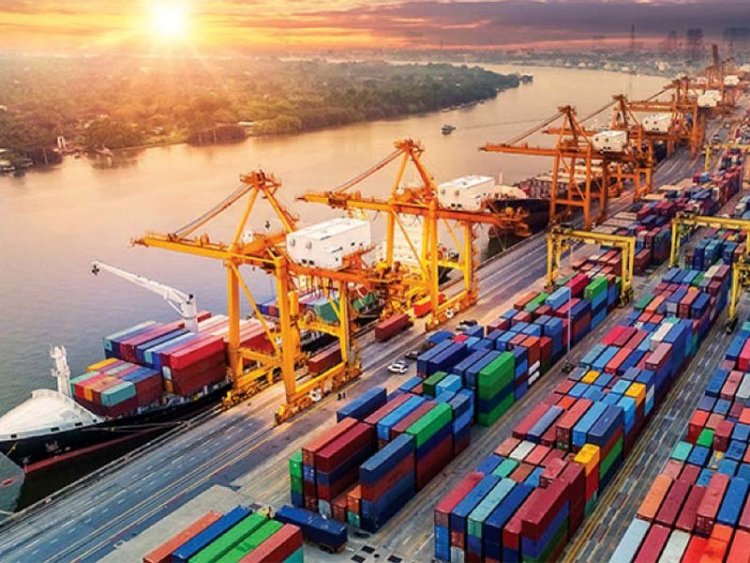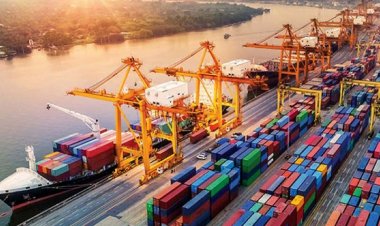Pakistan’s economy: somewhere it all went wrong
Gradual shift away from industrial to services sector has cost us all

KARACHI:
Fun fact: between 1960 and 1990, Pakistan’s GDP growth was higher than that of South Asia for all but just five years. In the last 30 years, however, it has been higher in only two annual readings, according to World Bank data. A remarkable reversal for a country that posted its highest population growth rate in the 1980s, suggesting that greater economic activity would be needed to maintain the same standard of living.
The time-period division has not been made to imply that a U-turn was made precisely in the 1990s, but to mark a turnaround that gradually saw Pakistan go from vying to be a South Asian powerhouse to a country now riddled with crises.
Similarly, choosing the GDP measure as a yardstick is meant to convey that a faster-growing population needed higher growth to accommodate the incoming job-seekers that would pile up each year.
It is widely believed that Pakistan now needs an economic growth rate of over 7% to ensure its unemployment doesn’t increase faster. Just for context – what we saw in 2019-2020 was a contraction, meaning a move in the opposite direction. And no, Covid-19 is not to blame. Groundwork for economic contraction had been laid much before, and Covid-19 just ensured we were thrown into the pit, rather than falling into it.
Coming back to the original argument, one could argue that the rest of the South Asian nations began their developing cycles just as when Pakistan had ended its and was walking on the path of a developed nation. But who are we kidding?
World Bank data shows total unemployment (as % of total workforce) in Pakistan has increased every year from 2014 onwards, reaching its highest level of 4.45 in 2019 and 2020. Its per-capita earnings, although lower but still close to the South Asian average in 2000, has taken on a completely different route since, angrily drifting away in protest of economic mismanagement.
Shift away from industrial activity
However, Pakistan’s issue isn’t just horrible economic management. It hasn’t been nationalisation or privatisation – the constant swing between who should own what. Nor has it been just the poorly-negotiated trade agreements, as the Pakistan Business Council (PBC) recently described it in its ‘Charter of Economy’.
What it has been is a gradual shift away from manufacturing. And whatever industrial or manufacturing that does exist has not added the kind of value or multiple it ought to.
Sift through data available with the Pakistan Bureau of Statistics, and it will reveal the general trend.
The industrial sector – one of three components of GDP – has stood at 19.3%. It was there when 2000 came, and it has stubbornly remained there in 2020. Share of the services sector has gone up from 53.6% to 61.4%, a massive increase given that there are only three components in the overall pie. Agriculture, not to be ignored, has also come down from 27% to 19.3%.
This is how the composition of Pakistan’s economy has evolved since 2000.
In isolation, one would be inclined to say that a change in composition is not entirely harmful. However, when you take into account tax contribution, chances of evasion, and the manner in which Pakistan’s informal economy has boomed, the picture becomes clearer.
It will not be a stretch to argue that the industrial sector, by virtue of being formalised, regulated, and governed (loosely as the term can be used in Pakistan), would, and should, contribute more in taxes. In the services sector, the same cannot be said. There are several loopholes, lesser regulation, and greater opportunities to evade taxes. Leave out agriculture since its contribution to taxes has always been a thorny issue.
So what could Pakistan do?
To promote industries, it needed to add power to its grid. But between 2006 and 2014, electricity consumption per capita went down from 466kWh to 447kWh. The world average went up from 2,732 to 3,131kWh.
This became a second issue within the complex structure that is Pakistan’s economy.
Now how do you resolve these issues without incurring either more debt or a strain on your foreign exchange earnings?
The answer this government, like many others before it, has come up with is this: go with the flow.
It entered the IMF programme, and allowed the currency to free fall to a point where it almost strangled the economy. Imports choked, and growth vanished. Exports, on the other hand, did not pick up in the manner they should have, given a cheaper currency. Debt relief was asked for as Pakistan attempted to battle Covid-19, but for how long can one shy away from its obligations.
These are all firefighting measures. They are not policies that address structural issues so embedded in our economy that we need self-examination first. If Pakistan is to increase its economic growth, or even look at increasing exports, it will come at the cost of a further strain on foreign exchange since energy – that will drive this activity – will be imported.
Possible solution
Apart from the Roshan Digital Account endeavour, which puts expatriates on a pedestal, and promoting tourism, there are some very obvious and immediate measures that can spur economic activity.
These would be the elephants in the room: loss-making state-owned enterprises, which according to a news report caused a loss of Rs692 billion two years ago. This at a time when Covid-19 had not struck and economic activity was still better. The problem in persisting with loss-making state-owned enterprises is the opportunity cost it comes with. A portion of that, spent on education or health, would benefit wider participants of the economy.
Privatising them may not be a bad idea. If not, then at least the one thing previous governments have been unable to do: restructure and reduce their losses.
The government has three years, and it should make them count. Ghosts of the past cannot be blamed in this case as well.
The writer is former business editor of The Express Tribune, and winner of the Citi Journalistic Excellence Award 2018. He holds a MBA from Cass Business School, and is currently associated with the CEJ-IBA. His Twitter handle is @bilala_memon
Published in The Express Tribune, November 23rd, 2020.







































